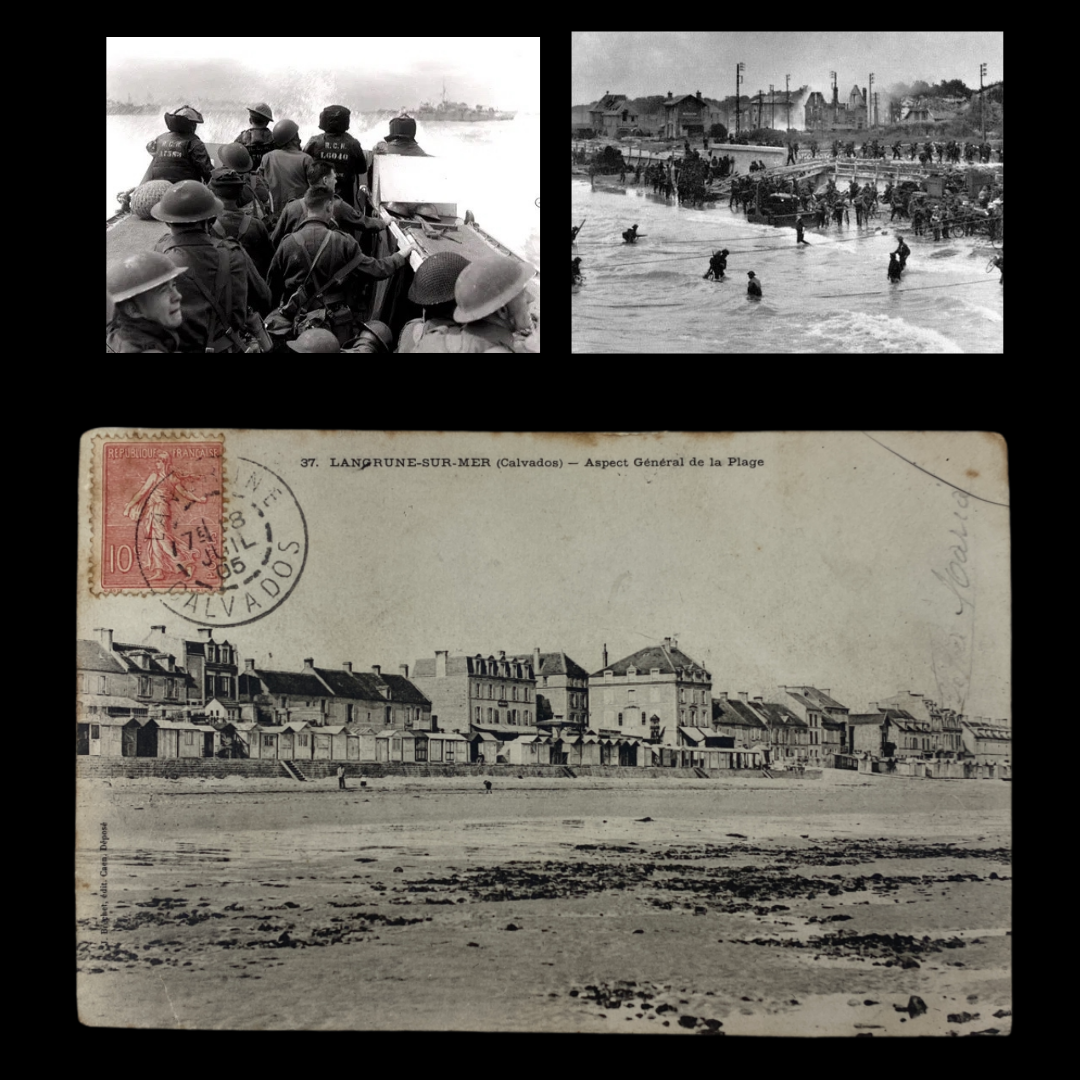'Langrune-Sur-Mer' Juno/Sword Beach Reconnaissance D-Day Invasion Postcard







'Langrune-Sur-Mer' Juno/Sword Beach Reconnaissance D-Day Invasion Postcard
This original WWII invasion reconnaissance postcard is labeled ‘Langrune-Sur-Mer’ also referred to years later as Juno and Sword Beach where the 3rd Canadian Division was to land on two beach sectors - Nan and Oboe —focusing on St. Aubin-sur-Mer and Luc-sur-Mer. Langrune-Sur-Mer is located adjacent to St. Aubin-sur-Mer. The Canadians suffered 1,200 casualties out of 21,400 troops who landed at Juno that day. A casualty ratio of 1 out of 18.
As seen in the reference photos, this postcard features one of the most notable buildings seen in many historical photographs of D-Day and Juno/Sword Beach. The buildings in the background of this postcard are featured in the famous of a downed aircraft shot down on in front of the seaside villas. Canadian troops due to land on Nan beach at St.Aubin-sur-Mer were briefed to orientate themselves by looking out for the distinctive seafront villa.
Langrune-sur-Mer and D-Day:
The village of Langrune-sur-Mer is defended by a large anti-tank wall and the support point coded Wn 26 armed by soldiers of the 9th company (commanded by the Hauptmann Kurt Mickish) of the Grenadier-Regiment 736, (716. infantry Division). The Wn 26 consists of a 75 mm FK 231 (f) barrel.
According to the distribution of Allied landing areas, Langrune-sur-Mer belongs to the sector of Sword Beach. However, it is the units that have to land at Juno Beach that are responsible for seizing them. The English Royal 48 Commando soldiers (joining the 3rd Canadian Infantry Division) disembarked at Saint-Aubin-sur-Mer at 8.55 am and advanced rapidly towards Langrune.
Wn 26 poses major problems for the 400 commandos who lose 160 (40%) of theirs during the fighting in Langrune. They were reinforced by Company B of the North Shore Regiment (8th Brigade) as well as by 41 Royal Marine Commando (3rd British Infantry Division) which landed on Sword. The intervention of Centaur tanks does not change the situation.
The German counter-attack launched by Panzergrenadier-Regiment 192 of the 21. Panzer-Division prevents the English from Sword to launch a sufficient number of units in the battle to capture Langrune. If the Germans leave the city on the evening of D-Day, snipers will resist during the day of June 7 before being definitively pushed away.
The fascinating story of how ordinary Brits’ holiday postcards helped win D-Day:
Across Britain, excited families jumped at the chance to send in their French holiday snaps after a call-out on the wireless. Many immediately hunted through boxes stuffed with photos of happy families posing on beaches as kids built sandcastles - but they had no idea their beloved pictures would prove instrumental in the D-Day landings. The request came in 1942, with Brits desperate to help the war effort sending in 30,000 packs of pictures of the French coast within just 36 hours. Incredibly, by 1944, 10 million holiday snaps and postcards, hotel brochures, letters and guidebooks had arrived by post. The best were pinned to a board in a top-secret planning room, so army bosses could study every inch of the beaches and landing areas where the Normandy invasion would go on to take place 75 years ago today. Those thrilled families enjoying the biggest treat of their lives had no idea of the horror that was about to unfold on those beaches - and, to look at them now, the innocent snaps are achingly poignant. Major Maddock along with hundreds of others used these postcards of the Normandy Coast to help plan the 1944 invasion of France. Many of these postcards were used in briefings with officers, land craft operators and other infantry soldier to study and orient themselves based on their drop locations of the building and landmarks in these photos.